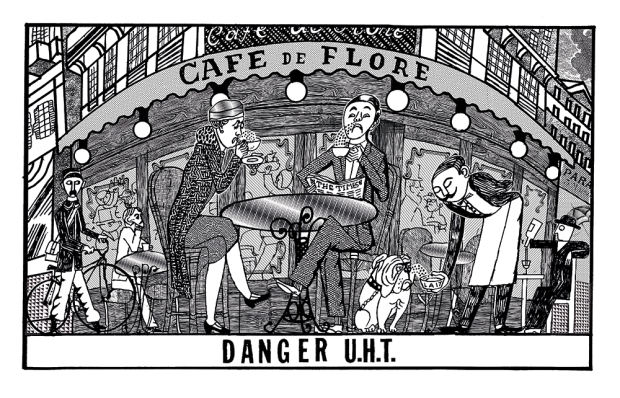In October, a panel of 21 experts from across the world gathered for the first of what promised to be a series of reports assessing readiness for pandemics. ‘Infectious diseases know no borders,’ warned the Global Health Security Index. ‘So all countries must prioritise and exercise the capabilities required to prevent, detect and rapidly respond to public health emergencies.’ Every country was called to be transparent about its capabilities ‘to assure neighbours it can stop an outbreak from becoming an international catastrophe’. Two countries were held up as the best examples: Britain and the United States.
If a league table were drawn up of countries that most failed to contain Covid deaths, the US and the UK would be pretty near the top. Yet both spent huge amounts of money on their pandemic preparedness and flattered themselves that their experts had built the strongest defence. The UK was ranked best in the world for its ability to stage ‘rapid response to and mitigation of the spread of an epidemic’. It was given 92 points out of 100. Six weeks later, the first Covid-19 case was recorded in China and the real test began.
From the offset, British officials felt pretty well prepared. On 11 March, Boris Johnson released a video of himself chatting with deputy chief medical officer Dr Jenny Harries. It would be a ‘quite a bad idea’ to wear a face mask in public, she said. The government’s ‘expert modellers’ had also found there was no need to ban mass gatherings. ‘I am absolutely delighted we are following the science and evidence,’ Dr Harries concluded.
Five days later, non-essential travel and attending pubs or clubs was discouraged. Twelve days after the video, pubs and clubs were shut down entirely and the lockdown introduced. Four days after that, Johnson revealed he had coronavirus. Over the following weeks and months, the UK recorded more than 60,000 excess deaths. How was confidence in the UK so badly misplaced?
In the wake of France’s coronavirus response, the New York Times reported that French citizens had turned to reading Strange Defeat, an account written in 1940 of how France’s army — thought to be the world’s best trained, equipped and prepared — had surrendered to Nazi occupation within just six weeks. Symbolic of that failure was the Maginot Line, a barrier of fortified installations which created a largely false sense of security. Internally, it had been known at the time that the line could be circumvented, but the generals thought it didn’t matter. It stands to this day as a monument of hubristic failure.
It’s less clear what the UK could choose to preserve if it wanted to mark for history the cascading sequence of errors that left it so defenceless against coronavirus. But since 2008, a public register has been kept of the greatest risks facing the country. Every year, pandemic illness has been top of the list — the risk judged simultaneously to be the likeliest to happen and to have the greatest impact if it did. That should have meant this risk had the most attention and time from expert policymakers. But we had built our own pandemic Maginot Line, with massive weaknesses that world experts had been unable to spot.
For a time, the UK’s pandemic flu plan, developed during the 2009 swine flu outbreak, was acclaimed internationally and it had remained at the core of the country’s strategy. Such was the focus on flu that the UK largely downplayed the risk of other pandemic diseases, even when new versions of coronavirus (which was previously seen as harmless) started to emerge with Severe Acute Respiratory Syndrome (Sars) and Middle East Respiratory Syndrome (Mers).
Pandemic readiness received little attention at the securocrat-dominated National Security Council or from ministers, even when the plans reportedly failed a 2016 war-gaming exercise. These failures mattered more than some let on, not least because the strain of coronavirus behind the current pandemic resembles the flu virus more than some initially suggested. It’s true that Covid-19 is spread by people who show no symptoms. But pandemic flus, like seasonal flus, also transmit asymptomatically.
Time and again, the failures of the UK plan come down to a lack of imagination and a lack of attention. Public Health England, the quango created under David Cameron, had let its stockpiles of PPE and other supplies decline. But it had put in place longstanding emergency priority orders to key suppliers to be able to top these up in the event of a crisis. These plans were duly activated in January, with a priority order for millions of units to a factory in France — well before the crisis hit the UK in full force. The problem was that as the crisis hit, France requisitioned all PPE within its borders, effectively nicking the UK’s reserve to prop up its own. This possibility had apparently not occurred to the authors of the UK response. The UK plan had also built into it the core assumption that society could continue to function as usual throughout an outbreak, so people would behave as they had a century ago when the Spanish flu struck. The need to change behaviour (again seen elsewhere in the reaction to Sars and Mers) was not considered. Lockdown, as a tool, was never imagined, so there was no guidance on either getting into or out of one.
Perhaps the most lethal mistake was the way the virus was left to run rampant through poorly equipped care homes, which had limited ability to shield their residents and often shared staff between sites. Orders to free up hospital beds to ‘protect the NHS’ saw thousands discharged and sent back without being tested for Covid. It was, it seems, no one’s job on the national stage to care about care homes. So nobody did.
The UK’s plan for a disaster appeared to contain no plans for disasters. It immediately left politicians and officials floundering without a guide. A decade of public sector cuts, an incoherent lack of communication between local and national government, and a total lack of ministerial grip — perhaps not least because several key players themselves caught the virus — worsened the crisis. As the Prime Minister embarks on his overhaul of government, he should remember this and ask: how many more emergency plans are sitting around Whitehall that might fall apart on first contact with reality?
Got something to add? Join the discussion and comment below.
Get 10 issues for just $10
Subscribe to The Spectator Australia today for the next 10 magazine issues, plus full online access, for just $10.
You might disagree with half of it, but you’ll enjoy reading all of it. Try your first month for free, then just $2 a week for the remainder of your first year.














Comments
Don't miss out
Join the conversation with other Spectator Australia readers. Subscribe to leave a comment.
SUBSCRIBEAlready a subscriber? Log in